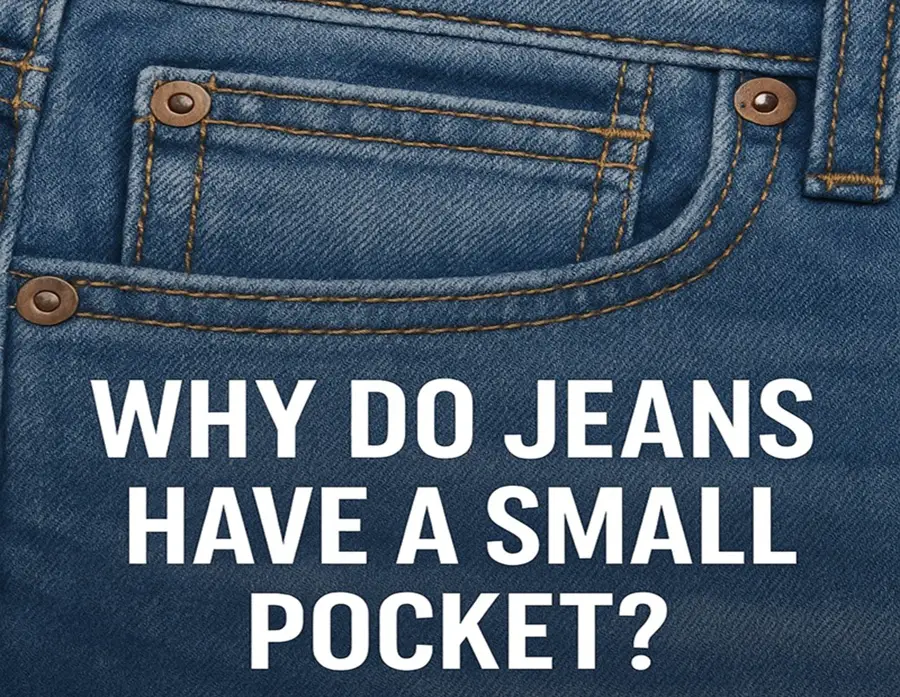
Introduction
Almost everyone has owned or worn a pair of jeans at some point, and chances are you’ve noticed a small pocket tucked inside the front right pocket. It’s easy to overlook, but it often sparks curiosity—what’s the point of that tiny pocket? Why is it even there if it’s barely big enough to hold anything?
This small, often mysterious feature is officially known as the fifth pocket, and it has a rich history that dates back to the 19th century. Despite the evolution of fashion, jeans manufacturers still include this small pocket in modern designs. Let’s explore its origins, evolution, and relevance today.
The Origin: A Pocket for Pocket Watches
The small pocket was originally created for a very practical reason. In the late 1800s, when Levi Strauss & Co. patented blue jeans (U.S. Patent No. 139,121 in 1873), people commonly carried pocket watches—small, round watches typically attached to a chain and stored safely in a pocket.
Since men didn’t wear wristwatches until the 20th century, cowboys, miners, and railroad workers in the American West relied on pocket watches. The small pocket inside the main right pocket of Levi’s jeans was added to protect these delicate timepieces from damage during hard labor. It kept the watch snug and prevented it from falling out during movement.
Levi Strauss officially referred to this design as a “watch pocket.”
Evolution Through the Decades
Over time, as wristwatches replaced pocket watches, the practical need for a dedicated watch pocket diminished. However, the small pocket remained. Why?
- Design Consistency: Denim brands, especially Levi’s, are built on tradition. The watch pocket became a signature element of jeans design. Removing it could upset long-time customers who associate it with authentic denim.
- Utility Adaptation: People began using it for other purposes:
- Coins
- Tickets
- Matches
- Condoms (in the 1970s and ’80s)
- USB drives
- Guitar picks
- Jewelry or rings
- Fashion Identity: By the late 20th century, the fifth pocket had become a fashion detail, appreciated for its aesthetic value even if it wasn’t always practical.
The Fifth Pocket Today
Modern jeans often include the fifth pocket, although its size and placement may vary slightly between brands. Today’s pocket is smaller than the original—on most modern jeans, it’s about 3 inches deep and 2.5 inches wide.
Uses in the Modern World:
- AirPods or earbuds: Perfect size for wireless earbud cases
- Keys or key fobs
- Loose change
- Lip balm or small cosmetics
- Lighters or vapes
Interestingly, some designers have started to reimagine or repurpose the pocket. In some cases:
- It’s stitched shut purely for aesthetic appeal.
- It’s replaced by logo tags or designer patches.
- In luxury jeans, it may feature zip closures or decorative rivets.
Cultural Significance
The small pocket is more than just functional—it’s symbolic. It represents:
- Heritage: A reminder of jeans’ roots in hard labor and utility.
- Nostalgia: Echoes a time when personal accessories like watches and matchboxes needed protection.
- Continuity: Even as styles and materials change, the fifth pocket stays, grounding jeans in their past.
Fashion historians and denim enthusiasts consider it a hallmark of classic denim design, just like rivets, contrast stitching, or leather brand patches.
Other Theories and Myths
Over the years, the small pocket has inspired myths and urban legends:
- Some think it was for coins (hence the term “coin pocket”).
- Others assume it was designed for matches, especially among smokers.
- There’s even a myth that it was used to hide small weapons like switchblades or mini revolvers (no historical evidence supports this).
In truth, its origin is well-documented by Levi Strauss & Co. as a watch pocket. But it’s a testament to its iconic status that so many alternate stories exist.
Conclusion
The tiny pocket inside your jeans is a survivor of a bygone era—a relic from when function dictated fashion. While its original purpose as a watch pocket may no longer apply to modern lifestyles, its continued presence is a nod to history, utility, and the enduring design of jeans.
Next time you slide on a pair of jeans, take a moment to appreciate that little pocket. It’s not just a design quirk—it’s a small window into 150 years of denim culture and innovation.







